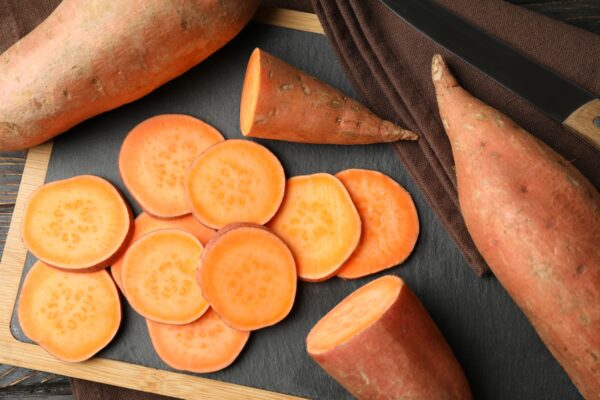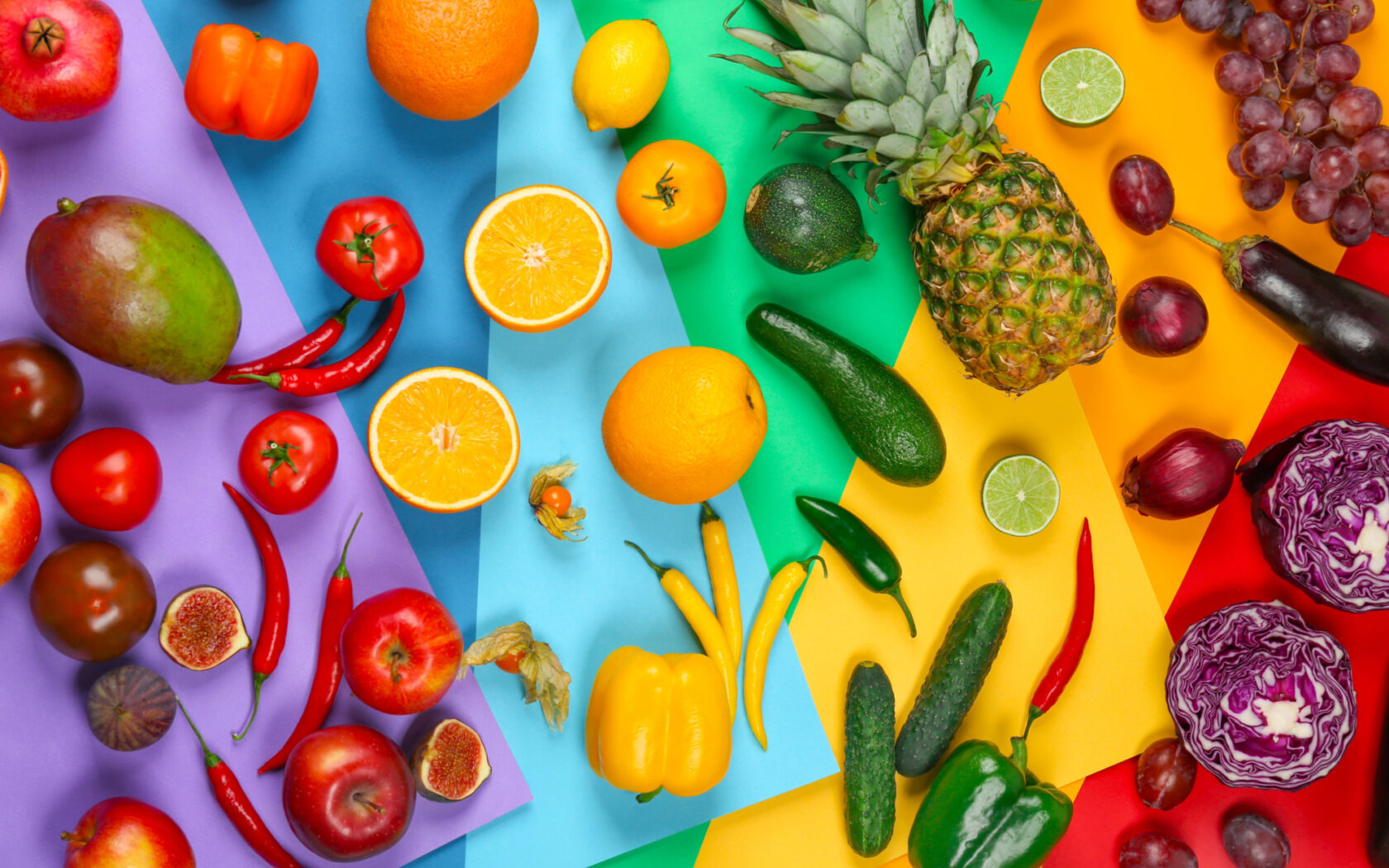The Health Benefits of Colorful Fruits & Vegetables
Eating a wide variety of colorful fruits and vegetables isn’t just nice for Instagram—it’s one of the easiest, tastiest ways to boost your overall health. Every color in the produce aisle brings its own set of unique nutrients and benefits. By filling your plate with a rainbow of foods, you give your body the tools it needs to stay strong, fight illness, and age well.
Why Color Matters for Your Health
A colorful diet is more than just eye candy—it’s a sign that you’re getting phytonutrients. These natural plant compounds not only give produce its vibrant shades but also help protect plants from pests and sun damage. When we eat them, they can help shield our bodies from chronic diseases like heart disease, cancer, and diabetes.
Research shows that the more colors you eat, the better your chances of protecting your heart, boosting your immune system, and keeping your body and mind healthier for longer.
Think of your plate like an artist’s palette—each color adds a different kind of “nutrition paint” to your health masterpiece.
Red Fruits & Vegetables: Protecting Your Heart
Red produce is packed with antioxidants—substances that help fight cell damage and support heart health.

Examples: tomatoes, strawberries, red bell peppers, watermelon, cherries, beets
Key nutrients: lycopene, anthocyanins, vitamin C, potassium, vitamin A
Health benefits:
- Supports a healthy heart and strong blood vessels
- May lower the risk of certain cancers
- Promotes clear skin and good eyesight
- Helps calm inflammation in the body
Lycopene, the pigment that gives tomatoes and watermelon their color, has been linked to reduced risk of some cancers and better heart health. Anthocyanins, found in cherries and strawberries, can help protect cells from harmful free radicals.
Orange & Yellow Produce: Defending Your Eyes and Immunity
Bright orange and yellow foods signal high amounts of beta-carotene and vitamin C—nutrients that keep your immune system strong and your eyes sharp.
Examples: carrots, oranges, sweet potatoes, mangoes, yellow bell peppers, peaches, pumpkin, pineapple
Key nutrients: beta-carotene, vitamin C, lutein, zeaxanthin, potassium
Health benefits:
- Strengthens the immune system
- Protects vision and eye health
- May reduce the risk of heart disease
- Keeps skin healthy and glowing
Beta-carotene, found in carrots and sweet potatoes, is converted by the body into vitamin A, which plays a key role in healthy vision and fighting off infections. Lutein and zeaxanthin, found in yellow peppers and corn, can help prevent age-related eye problems.

Green Fruits & Vegetables: Cleansing and Strengthening
Green produce is a powerhouse for cleansing the body and building strong bones.
Examples: spinach, broccoli, kale, avocados, green apples, cucumbers, peas, lettuce, Brussels sprouts
Key nutrients: chlorophyll, vitamin K, folate, magnesium, lutein, isothiocyanates, fiber
Health benefits:
- Helps the liver remove toxins
- Strengthens bones and teeth
- Supports healthy blood pressure
- Promotes cell growth and eye health
Dark leafy greens like kale and spinach are especially rich in vitamin K, which helps with blood clotting and bone health, and fiber, which supports digestion and keeps you feeling full.

Blue & Purple Fruits & Vegetables: Brain and Aging Support
The deep shades of blue and purple in some fruits and vegetables come from anthocyanins, which help protect the brain and slow down signs of aging.
Examples: blueberries, eggplant, purple grapes, blackberries, plums, purple cabbage
Key nutrients: anthocyanins, resveratrol, vitamin C, fiber
Health benefits:
- Supports memory and brain function
- Helps protect against age-related decline
- Fights inflammation in the body
- Supports heart and urinary tract health
Blueberries, for example, are famous for improving cognitive function, while purple grapes contain resveratrol—linked to heart health and healthy aging.

Tips for Adding More Color to Your Plate
Eating more colorful foods doesn’t have to be complicated or expensive. Small changes can make a big difference.
- Shop the rainbow: When you grocery shop, try adding at least one fruit or vegetable from a color you haven’t eaten that week.
- Go seasonal: Seasonal produce is fresher, tastier, and often more affordable.
- Eat the skin: Whenever it’s safe and edible, leave the skin on. It’s where many phytonutrients and fiber are concentrated.
- Mix colors: Add a variety of colors to your salads, smoothies, stir-fries, and wraps for both beauty and nutrition.
- Snack smarter: Replace chips or cookies with carrot sticks, bell pepper slices, or a small handful of berries.
- Prep ahead: Wash, cut, and store different kinds of produce so they’re easy to grab when you’re hungry.
Remember: in most cases, the richest source of nutrition is right in the skin, so don’t peel away the good stuff unless you have to.
The Bottom Line
Each color group of fruits and vegetables offers its unique blend of nutrients. Red foods help the heart, orange and yellow support vision and immunity, green promotes detox and strong bones, and blue and purple protect your brain and slow aging.
Aim to eat at least one food from each color group every day. Not only will your body benefit, but your meals will look more vibrant and taste more exciting. When it comes to natural wellness, nature has already given us the perfect toolkit—bright, colorful, and delicious.
Eat the rainbow, and let your plate be a celebration of both flavor and health.



